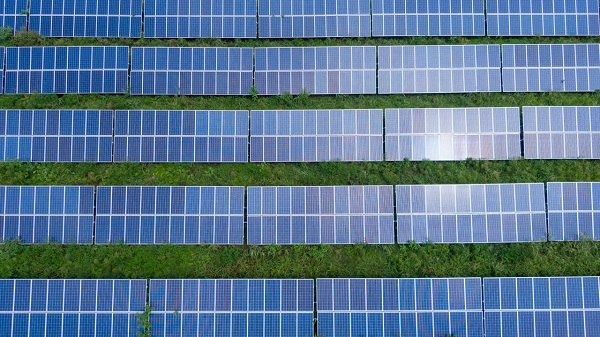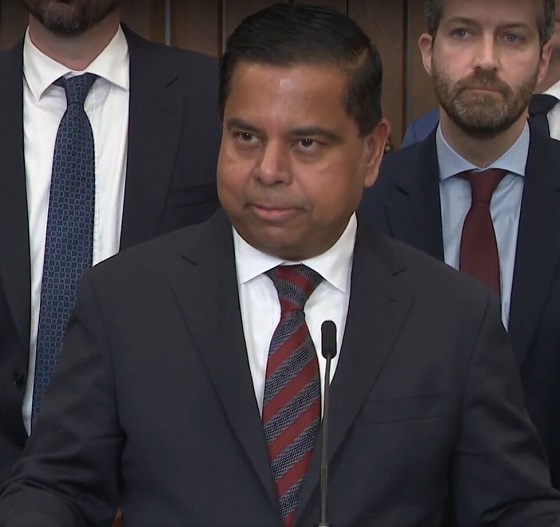Energy
Solar’s Dirty Secret: Expensive and Unfit for the Grid

From the Frontier Centre for Public Policy
By Ian Madsen
To store twelve hours worth of the 1.6 TW total installed global solar power capacity would cost about 12.9 trillion Canadian dollars
Solar energy’s promise of a green, abundant future is captivating—but beneath the shiny panels lies a story of unreliability, hidden costs, and grid instability.
Green enthusiasts endorse solar energy to reduce carbon dioxide (CO2) emissions from traditional energy sources such as coal, oil, and natural gas. The source of solar power, the sun, is free, abundant, and always available somewhere. However, these claims are misleading. Solar energy is costly and unreliable in ways its proponents commonly disguise. If adopted extensively, solar energy will generally make energy and electric power grids more unreliable and expensive.
The solar industry has burgeoned remarkably, with an estimated average compound annual growth rate (CAGR) of about 39 percent from 2021 to 2024. Earlier this century, the growth rate was even faster. As a result, global installed solar capacity has reached 1.6 terawatts (TW), according to the U.S. Energy Department. This capacity is theoretically sufficient to power a billion homes at 1.5 kilowatts per home. However, the term “theoretically” poses a significant challenge. Solar power, without affordable energy storage solutions, is only available during daylight hours.
The minimum amount of storage required to make global solar power truly “dispatchable”—i.e., independent of other backup energy sources—would be twelve hours of storage. Options include batteries, pumped hydro, compressed air, or other technologies. Since batteries are today’s standard method, the following calculation estimates the cost of the minimum amount of battery storage to ensure reliable solar power.
Twelve hours per day multiplied by 1.6 terawatts and dividing the result by one kilowatt-hour (kWh), we arrive at a final requirement of 19.2 billion kWh of storage. According to a meta-study by the National Renewable Energy Lab, the utility-grade cost of battery storage is C$670.99 per kWh.
To store twelve hours worth of the 1.6 TW total installed global solar power capacity would cost about 12.9 trillion Canadian dollars; a safer twenty-four hours’ storage would be double that. Total storage available in 2023 was, the International Energy Agency notes, approximately two hundred and sixty gigawatts (GW) of power – a tiny fraction of power production of 3.2 million GW in 2022, using figures from Statista.
No firms or governments can have the necessary storage to make solar viable even if the entire globe was involved, as the total global GDP was about C$148 trillion in 2023, according to World Bank figures. That is not solar’s only problem. The most harmful effect is how it undermines power grids. The misleading, ‘levelized’ near-zero cost undercuts traditional, reliable on-demand energy sources such as coal, natural gas and nuclear power.
Importantly, high solar and wind power output can make prices turn negative, as an Institute for Energy Research article noted, but can swiftly revert to high prices when winds calm or the sun sets, as the fixed costs of traditional power plants are spread over lower production. Baseload traditional energy sources are essential because the frequent unavailability of renewables can be dangerous. Consequently, overall costs for customers are higher when renewables are included in the energy mix. Solar mandates in California made its power supply wildly erratic.
Without affordable energy storage, solar is a seductive illusion; its unchecked adoption risks turning power grids into unreliable, costly experiments at the expense of energy stability.
Ian Madsen is the Senior Policy Analyst at the Frontier Centre for Public Policy.
Energy
Could the G7 Summit in Alberta be a historic moment for Canadian energy?

From Resource Works
Canada can be the democratic world’s top energy supplier, and the G7 Summit in Alberta is the perfect time to commit to that.
Canada is at the crossroads of opportunity as the leaders of the G7 convene in Kananaskis, Alberta.
An Ipsos poll has named Canada the top preferred oil supplier among G7 countries for the second time since 2023. No less than 68 percent of G7 respondents declared that Canada was among their top three choices to supply oil.
This should be yet another motivator for Canada to solidify itself as a key player in energy security and economic stability among the democratic nations.
The timing and location of this year’s G7 summit shows how important Canada can be to the world. Alberta, Canada’s energy heartland, is the source of nearly all of the country’s oil, and the provincial government wants more of it to reach global markets.
Those geopolitical anxieties caused by Russia’s invasion of Ukraine in 2022 have not disappeared, and Canada’s allies and partners like the European Union (EU), Japan, South Korea, and India are looking for a reliable and responsible partner to supply them with energy, and we are the best and most obvious choice.
Willing partners are easy to find overseas, but the other provinces and the federal government need to become equally enthusiastic first.
There is more to this than mere symbolism. Canada embracing its position as the most desirable supplier of oil makes complete sense.
In 2023, Ipsos found that Canada’s political stability, comprehensive environmental rules, and strong regulatory frameworks are why it ranked first among preferred oil suppliers. Norway is another popular option, but Canada has the advantage of better market access to the United States and the Asia-Pacific, along with established infrastructure and an open government.
It all combines to create a distinct advantage for Canada in the world of trade.
The US has slid as a popular oil supplier, to Canada’s advantage, and we need to capitalize on that more than ever.
As Russia’s bloody, disruptive war with Ukraine continues to drag on, the EU still needs sources of alternative energy to make a clean break with Moscow. Russia had previously served as the bloc’s effective gas station, albeit one armed with nuclear weapons.
G7 member states like Britain and the EU are looking to slap even stricter limits on Russian energy exports that go beyond what is already in place. Whatever Russia has to lose is Canada’s to gain.
Canada began to enlarge its export capacity last year with the completion of the twinning of Trans Mountain pipeline (TMX), enabling Canada to double the amount of oil it can pipe to Pacific markets. Shipping larger amounts of Canadian energy to partners in Japan, India, South Korea, and others has never been easier.
It was a monumental example of how investing in the right sorts of infrastructure can improve economic security, both nationally and internationally. Internally, developing the oil industry is a long term goal of First Nations leaders and communities.
The myth of First Nations opposing the expansion of oil and gas is one that needs to die. The Indian Resource Council, which represents over 130 First Nations, has repeatedly championed the responsible development of natural resources as a means of fostering economic independence and community renewal.
Many First Nations and other Indigenous groups have invested heavily into pipelines, production sites and storage facilities, and want to expand it further. In terms of pure economic value, there is not another industry that has created more wealth in Indigenous communities across Western Canada.
Complacency from the federal government and other authorities at this time could not be timed more poorly as the G7 Summit comes to Alberta. When the gathering ends on June 17, we should hope that it was a turning point where Canada made a direct and clear commitment to modernizing and expanding its oil and gas sector.
Our role in the world can be that of the great democratic alternative to Russia when it comes to supplying energy and other resources. Alberta knows it, as do our allies and Indigenous people across Canada.
Ottawa should listen. It is time to realize our potential to be an even greater energy superpower.
Through that, we can reduce the power of authoritarian, hostile regimes in the world by building a stronger, more unified Canada.
Alberta
Alberta’s grand bargain with Canada includes a new pipeline to Prince Rupert

From Resource Now
Alberta renews call for West Coast oil pipeline amid shifting federal, geopolitical dynamics.
Just six months ago, talk of resurrecting some version of the Northern Gateway pipeline would have been unthinkable. But with the election of Donald Trump in the U.S. and Mark Carney in Canada, it’s now thinkable.
In fact, Alberta Premier Danielle Smith seems to be making Northern Gateway 2.0 a top priority and a condition for Alberta staying within the Canadian confederation and supporting Mark Carney’s vision of making Canada an Energy superpower. Thanks to Donald Trump threatening Canadian sovereignty and its economy, there has been a noticeable zeitgeist shift in Canada. There is growing support for the idea of leveraging Canada’s natural resources and diversifying export markets to make it less vulnerable to an unpredictable southern neighbour.
“I think the world has changed dramatically since Donald Trump got elected in November,” Smith said at a keynote address Wednesday at the Global Energy Show Canada in Calgary. “I think that’s changed the national conversation.” Smith said she has been encouraged by the tack Carney has taken since being elected Prime Minister, and hopes to see real action from Ottawa in the coming months to address what Smith said is serious encumbrances to Alberta’s oil sector, including Bill C-69, an oil and gas emissions cap and a West Coast tanker oil ban. “I’m going to give him some time to work with us and I’m going to be optimistic,” Smith said. Removing the West Coast moratorium on oil tankers would be the first step needed to building a new oil pipeline line from Alberta to Prince Rupert. “We cannot build a pipeline to the west coast if there is a tanker ban,” Smith said. The next step would be getting First Nations on board. “Indigenous peoples have been shut out of the energy economy for generations, and we are now putting them at the heart of it,” Smith said.
Alberta currently produces about 4.3 million barrels of oil per day. Had the Northern Gateway, Keystone XL and Energy East pipelines been built, Alberta could now be producing and exporting an additional 2.5 million barrels of oil per day. The original Northern Gateway Pipeline — killed outright by the Justin Trudeau government — would have terminated in Kitimat. Smith is now talking about a pipeline that would terminate in Prince Rupert. This may obviate some of the concerns that Kitimat posed with oil tankers negotiating Douglas Channel, and their potential impacts on the marine environment.
One of the biggest hurdles to a pipeline to Prince Rupert may be B.C. Premier David Eby. The B.C. NDP government has a history of opposing oil pipelines with tooth and nail. Asked in a fireside chat by Peter Mansbridge how she would get around the B.C. problem, Smith confidently said: “I’ll convince David Eby.”
“I’m sensitive to the issues that were raised before,” she added. One of those concerns was emissions. But the Alberta government and oil industry has struck a grand bargain with Ottawa: pipelines for emissions abatement through carbon capture and storage.
The industry and government propose multi-billion investments in CCUS. The Pathways Alliance project alone represents an investment of $10 to $20 billion. Smith noted that there is no economic value in pumping CO2 underground. It only becomes economically viable if the tradeoff is greater production and export capacity for Alberta oil. “If you couple it with a million-barrel-per-day pipeline, well that allows you $20 billion worth of revenue year after year,” she said. “All of a sudden a $20 billion cost to have to decarbonize, it looks a lot more attractive when you have a new source of revenue.” When asked about the Prince Rupert pipeline proposal, Eby has responded that there is currently no proponent, and that it is therefore a bridge to cross when there is actually a proposal. “I think what I’ve heard Premier Eby say is that there is no project and no proponent,” Smith said. “Well, that’s my job. There will be soon. “We’re working very hard on being able to get industry players to realize this time may be different.” “We’re working on getting a proponent and route.”
At a number of sessions during the conference, Mansbridge has repeatedly asked speakers about the Alberta secession movement, and whether it might scare off investment capital. Alberta has been using the threat of secession as a threat if Ottawa does not address some of the province’s long-standing grievances. Smith said she hopes Carney takes it seriously. “I hope the prime minister doesn’t want to test it,” Smith said during a scrum with reporters. “I take it seriously. I have never seen separatist sentiment be as high as it is now. “I’ve also seen it dissipate when Ottawa addresses the concerns Alberta has.” She added that, if Carney wants a true nation-building project to fast-track, she can’t think of a better one than a new West Coast pipeline. “I can’t imagine that there will be another project on the national list that will generate as much revenue, as much GDP, as many high paying jobs as a bitumen pipeline to the coast.”
-

 Business17 hours ago
Business17 hours agoCarney’s European pivot could quietly reshape Canada’s sovereignty
-

 Alberta16 hours ago
Alberta16 hours agoAlberta’s grand bargain with Canada includes a new pipeline to Prince Rupert
-

 Crime1 day ago
Crime1 day agoManhunt on for suspect in shooting deaths of Minnesota House speaker, husband
-

 Crime1 hour ago
Crime1 hour agoMinnesota shooter arrested after 48-hour manhunt
-

 Bruce Dowbiggin1 hour ago
Bruce Dowbiggin1 hour agoWOKE NBA Stars Seems Natural For CDN Advertisers. Why Won’t They Bite?
-

 conflict2 hours ago
conflict2 hours ago“Evacuate”: Netanyahu Warns Tehran as Israel Expands Strikes on Iran’s Military Command
-

 Energy1 hour ago
Energy1 hour agoCould the G7 Summit in Alberta be a historic moment for Canadian energy?



